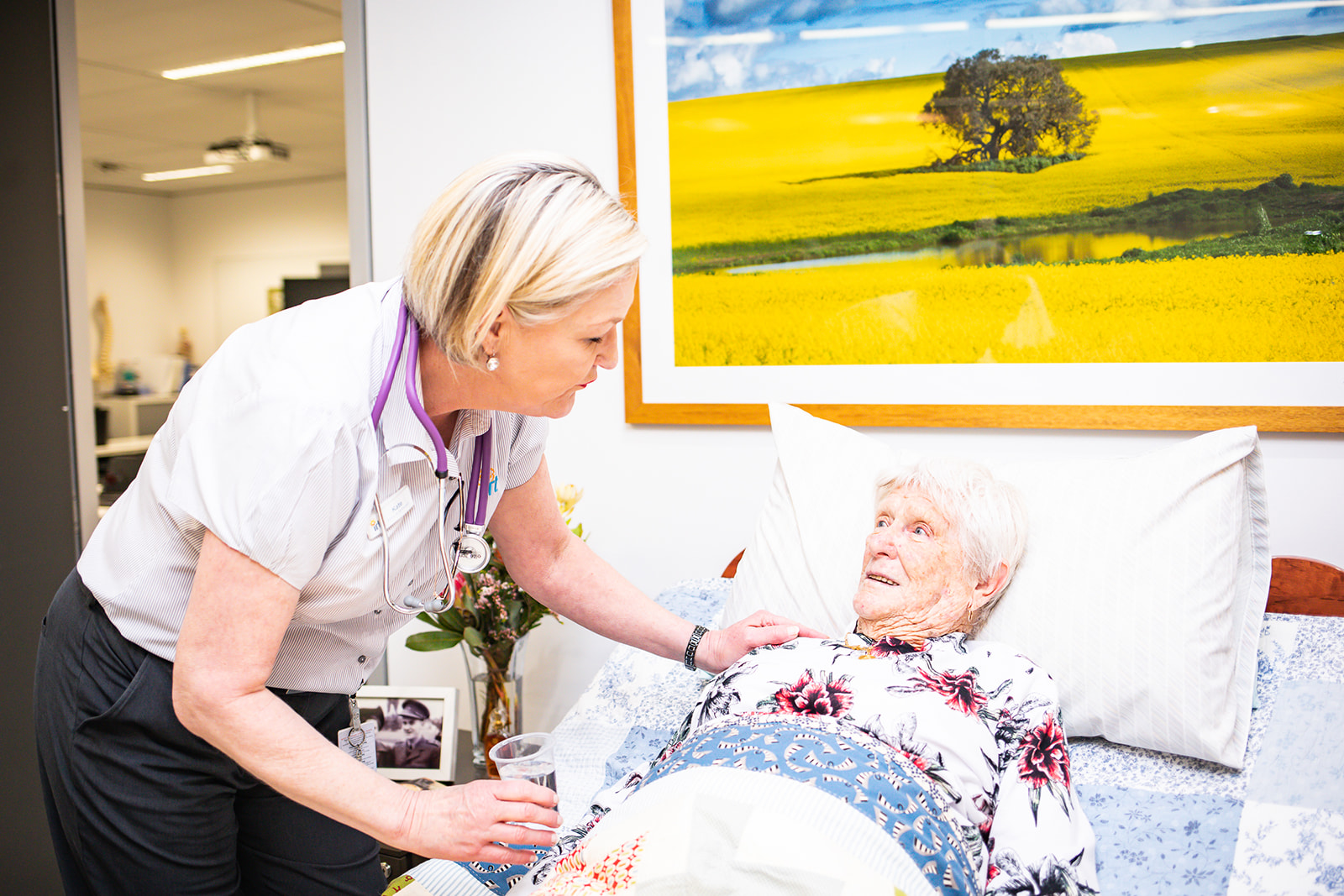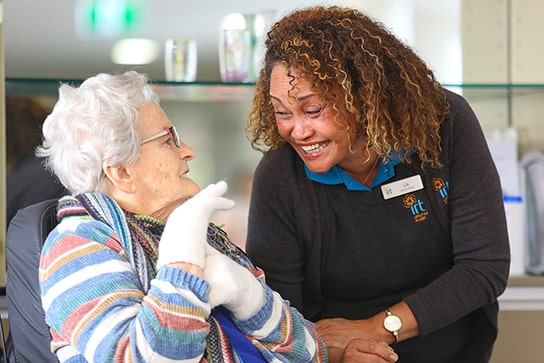8 ways retirement villages can support healthy ageing
Staying healthy in retirement isn’t just about exercising and eating well – it’s also about maintaining connections, learning new skills, keeping the mind active and feeling a sense of purpose and belonging.

The environments we live in are highly influential on our behaviour, mood, and our mental and physical wellbeing. So, it’s important that when we choose where we live, we do so with healthy ageing in mind.
What is healthy ageing?
The World Health Organization describes healthy ageing as the process of developing and maintaining the functional abilities that enables wellbeing in older age. The concept focuses on creating environments and opportunities that enable people to do what they value throughout their lives.
What is functional ability and how does it relate to healthy ageing?
According to the World Health Organization, functional ability is about having the capabilities that enable all people to do what they value. This includes a person’s ability to:
- meet their basic needs
- learn, grow and make decisions
- be mobile
- build and maintain relationships; and
- contribute to society.
Being able to live in environments that support and maintain your functional ability is key to healthy ageing.
How can living in a retirement village support healthy ageing?
It’s natural to want to stay in your current home for as long as possible, however, most homes are not designed with the ageing needs of seniors in mind.
Retirement villages offer an environment where you can live a lifestyle you love and more easily maintain your health and wellbeing with age.
Here are eight ways living in a retirement village can support healthy aging:
1. Connection
Did you know that people who are part of a caring and connected community live longer than those who are isolated and lonely?
Older people across Australia (Australian Ageing Agenda, Loneliness leading concern for older people, 2013) list loneliness and social isolation as some of their major concerns as they age.
The 2015 Australian Bureau of Statistics Census also indicated over a quarter of older Australians live alone. Social isolation and loneliness is a leading cause of hospitalisation in older people, and is linked to increased mental health and chronic health issues.
Retirement villages are specially designed for older people, so they can help address these types of issues and support a happy and healthy retirement. Shop around for a vibrant retirement village community that provides regular opportunities for residents to interact through on-site recreational facilities, community centres and social activities.
At IRT Group, 97% of our residents feel connected to their retirement village community (2021 Customer Experience Survey).
2. Active lifestyle
Regular exercise can sometimes slip away with age, but it is even more important to keep moving when you’re older because it triggers the body’s natural repair process.
There are plenty of benefits to staying physically active as you age. It can help lower your risk of heart disease, high blood pressure, stroke, diabetes and other chronic diseases. It can also improve your strength and balance so you can prevent injuries and stay independent.
Many retirement villages help promote an active lifestyle and offer a range of physical activities within the village. Some even offer easy access to facilities such as swimming pools, golf courses, bowling greens and on-site gyms.
And because retirement villages provide a low maintenance lifestyle with less garden and household maintenance required, living in a retirement village can give you more time and opportunities to explore new interests.
Look for a retirement community that offers easy access to senior-friendly fitness facilities or opportunities for physical activity nearby.
3. Safety and security
It's important that we feel safe in our homes, and retirement villages can provide higher levels of health and physical security for older people. Feeling safe, secure and reassured in our own homes is fundamental to feeling less stressed and more relaxed.
Living in a home with steep entrances and stairs is unnecessarily dangerous, whereas retirement villages offer safer purpose-built homes and communities intentionally designed to adapt to your long-term ageing needs.
Many retirement villages have a range of security features including gates and fences, cameras, and sensor lights. You also have quick access to emergency services if you were to ever require them.
More than 90% of residents at IRT Group told us they feel safe and secure in their retirement village community. You too could enjoy the peace of mind of not only a safer home, but one that you can stay in for many years to come, if not for good.
4. Purpose
Finding things that matter to you and planning purposeful activities is even more important as we get older. Whether it’s gardening or playing bowls, people who maintain hobbies and interests tend to live more fulfilling lives in retirement.
Retirement villages offer many opportunities for residents to interact and connect, without living in each other's pockets, through on-site recreational facilities, community rooms and social activities. Most villages offer an activity calendar where you can get involved in as much or as little as you like. Activities can include: volunteer work, card nights, fundraising events, walking groups, knitting groups, golf days, dance parties, morning yoga classes and more.
Find a retirement village that offers activities that suit you, with the right facilities and location to allow you to keep doing the things you love.


5. Finances
Financial pressure can be a common source of stress for older adults. Retirement villages can be an affordable way to downsize from your family home and free up equity to fund your lifestyle and additional services over the next stage of life.
Always seek financial advice before making decisions. A financial advisor can review your financial assets, discuss any financial risks and answer any questions you may have so that you can feel confident and prepared to move forward with your retirement plans.
6. Support
As we get older, we may need some additional support, whether it’s household chores such as cleaning and maintenance or personal tasks such as showering and getting dressed.
If you choose to live in a retirement village, common areas are looked after by the operator and they’ll even help with day-to-day home maintenance, like changing light bulbs. This frees up time to spend with family and friends and do the things you enjoy.
You can also access home care services to help you with everyday tasks around the house. Some retirement villages are also co-located with aged care centres, so if you or your partner’s health or needs change, there's the option to access 24/7 support when you need it.
7. Quality of life
According to research from the Villages.com.au National Village Survey 2018, 52% of retirement village residents said their happiness increased after moving into a retirement village. The survey also found that:
- 27% of people said their physical health improved
- 40% said their mental health improved
- 37% felt more financially secure after they moved into a retirement village.
8. Active ageing
Ageing and health go hand-in-hand in retirement, and pleasingly most retirement villages promote active ageing for residents.
Active ageing is defined by the World Health Organization as the process of optimising opportunities for health, participation and security in order to enhance quality of life as people age.
Many retirement villages offer a range of facilities and activities to support active ageing, such as:
- Health and wellness programs, such as yoga and walking groups
- Sporting activities, such as swimming, golf and lawn bowls
- Social events, such as cards, knitting, cooking, dancing, book clubs, men's shed groups and other opportunities for social connection
- Accessible and age-friendly design features such as flat walking surfaces, ramps, handrails, sensor lights, innovative technology and emergency response systems.
Look for retirement villages that promote active ageing environments, programs and places that support people to live well and take charge of their health and wellness.

Retirement living at IRT
If you’re interested in downsizing your house and upsizing your life, IRT has more than 30 retirement villages across NSW, Qld and ACT. Find out more about the possibilities of village life and how one of our independent living communities can suit you and your unique needs.
Find out moreYou may also like
Palliative care vs end of life care: what's the difference?
What is palliative care? People think palliative care is the end of someone’s life, but there’s so much more to it.
Choosing an Aged Care Centre: What to consider
Moving from your home into a residential aged care centre can be a rewarding experience for you or your loved one.


